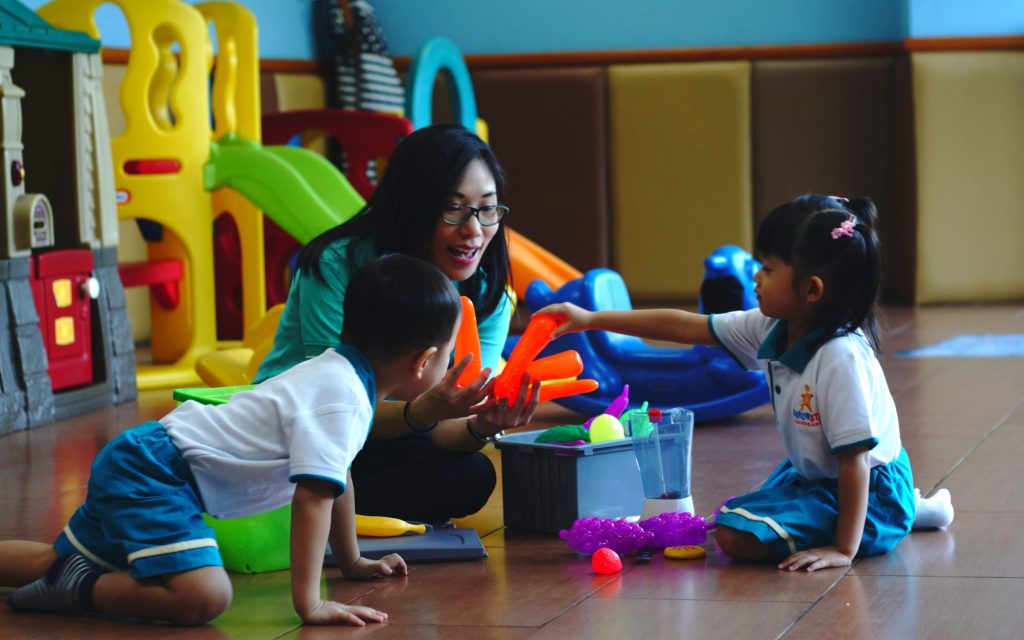Cameron and Ellie were in the dramatic play center. Ellie said, “Cameron, I am going to be the shopkeeper. You can shop all you want at my store. I will be waiting for you at the cashier.” Cameron nodded with a big smile while taking a basket to place his items in. He took some eggs, carrots, and broccoli. He then went to “the cashier.” Ellie said, “That’ll be ten hundred thousand rupiahs, Cameron.” Cameron widened his eyes, “How much is that? I only have three of these,” while handing out blank pieces of paper to Ellie. Ellie said, “Oh no, I need more than this. This is only three hundred thousand rupiahs.” Cameron then asked how many more he needs and both counted forward from four hundred thousand to ten hundred thousand. They decided that Cameron needed seven hundred thousand more. Cameron went to the writing center to get printer paper and began cutting them into smaller pieces. Ellie said, “I can help to cut!” Cameron and Ellie cut out 7 pieces of paper and Ellie finally said, “That’s enough now. You can take your veggies and eggs, Cameron. Thank you for shopping at my store.”
The scenario above can be found in a play-based learning setting. Here, they are free to realize their ideas and understandings of how “the world” works. As quoted in Gillispie, L., G. (2016), Hirsch-Pasek, K. & Golinkoff, R. (2016) mentioned the six C’s that children will need as adults to succeed in the 21st century: collaboration, communication, content, creative innovation, critical thinking, and confidence. Let us break down what happened in the scenario above.
- Collaboration: Cameron and Ellie creatively created their imaginative shopkeeper and customer setting. They worked together from the beginning to the end of the story and solved a problem together.
- Communication can be either verbal or non-verbal. Both communicated clearly, verbally and non-verbally, that they were understood by each other and reached an understanding to move along together to accomplish one thing.
- Content: together they solved a problem that required mathematical thinking.
- Creative innovation: the development of this setting was considered as a result of creative innovation. They even created their own “money.”
- Critical thinking: the question of how many more they needed was a result of Cameron and Ellie thinking critically.
- Confidence: without this, Cameron and Ellie would not take risks and try new things from the beginning. Ellie had the confidence to lead this, but also the empathy to help Cameron, creating the needed “money.”
So evidently, it is more than just playing. There is always learning that emerges through it, whether it is content or skills. This kind of learning is deep and meaningful for children because they have shaped it themselves (Gillispie, L., G., 2016). This kind of learning produces an individual who develops a love for learning, and therefore, a successful future learning.
References: Gillispie, L., G. (2016). It’s never “just play”! Rocking and rolling. Retrieved from https://www.naeyc.org/system/files/rocking_rolling%20column-2.pdf.

